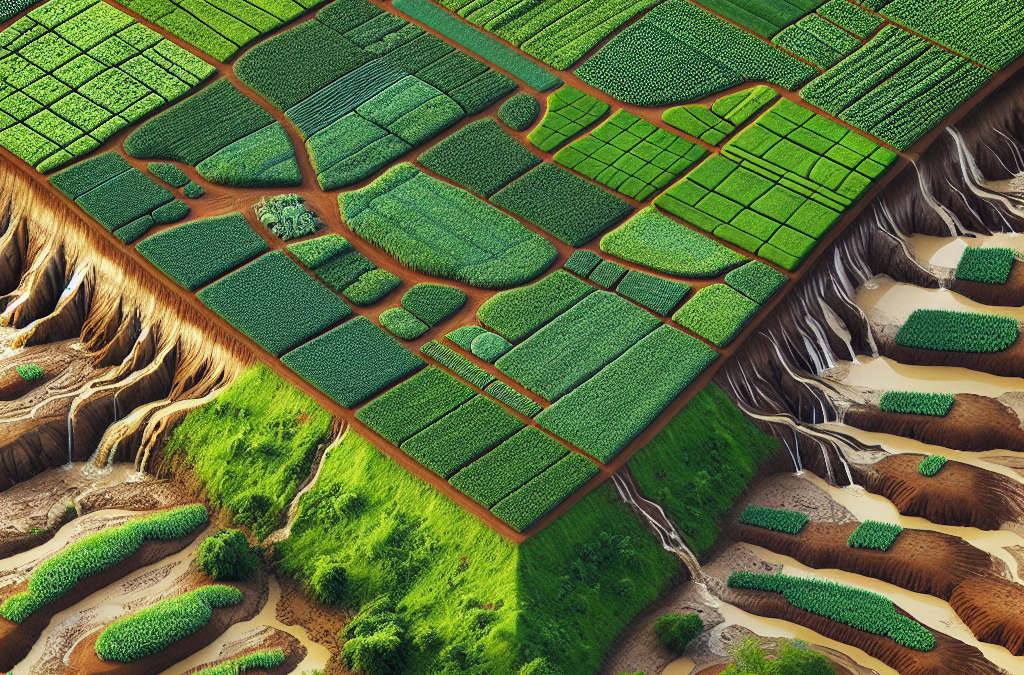Enhancing Soil Structure
Building Resilience
One of the most exciting aspects of organic farming is its emphasis on nutrient-rich soil that can withstand the test of time. When I switched to organic practices, I noticed first-hand how a healthy soil structure not only resists erosion but actually becomes more resilient over time. It’s like nurturing a friend; the better care you take, the stronger they become!
Soil organic matter plays a crucial role in this. It acts like a sponge, holding water and nutrients, which means that during heavy rains, the soil can absorb the water rather than letting it wash away. Picture a super-absorbent towel soaking up every drop of rain. That’s what healthy soil can do!
Also, mixing in cover crops can be a game changer. When certain plants are grown and then tilled back into the soil, they help improve its structure. It’s like creating a natural blanket that protects your soil from the elements, keeping it intact and healthy.
Reducing Compaction
One thing that struck me when diving into organic farming was the impact of machinery use. Conventional practices often lead to soil compaction, which can increase runoff and erosion. I found that by reducing the number of trips I make into the fields, I can keep that soil fluffy, allowing air and water to penetrate better.
Using techniques like no-till farming has been a revelation for me. It directly minimizes compaction and encourages a thriving community of soil organisms. Just imagine tiny earthworms happily burrowing through the soil, creating channels that allow water to flow in rather than running off — it’s amazing!
Moreover, employing lighter tractors or even considering alternatives like horse-drawn equipment can also make a difference. I’ve seen folks in my community adapt these practices, and it’s nice to see the positive impact on the land as a consequence.
Encouraging Biodiversity
In my experience, organic farming truly celebrates biodiversity. By planting a variety of crops, I’ve noticed a decrease in pests and diseases that often plague monocultures. It’s like throwing a big party where every guest brings a unique flavor to the mix!
This diversity supports a complex web of life within the soil, which can help stabilize soil and keep it in place. Plus, more biodiversity means healthier ecosystems that can absorb more moisture, reducing the chances of erosion during heavy rains.
Finally, I can’t stress the importance of encouraging beneficial insects and plants to complement our efforts. Setting up habitats for pollinators like bees and butterflies has been a fun project. It both beautifies my farming space and contributes to overall soil health.
Minimizing Soil Disturbance
No-Till Practices
For me, embracing no-till practices was one of the best decisions I made in my farming journey. By keeping existing soil structure intact, I’ve found my soil’s natural resilience to be much stronger. This means less erosion and improved moisture retention. It’s kinda like leaving my comfy blanket on my bed instead of tossing it aside!
Practicing no-till also helps preserve the organic matter that has built up over the years. When I see the dark, rich soil with all its nutrients, it’s clear that disrupting it can do more harm than good. Each year, I feel more connected to the land when I maintain that balance.
Moreover, there’s a satisfaction that comes when realizing that my soil can thrive without turning it upside down. It’s a way to show respect for the hard work that nature does to sustain itself.
Cover Cropping
I’ve come to learn that cover cropping is one of those unsung heroes in organic farming. Planting cover crops can prevent erosion by keeping the soil covered during the off-season when it’s otherwise vulnerable. It’s like adding a protective shield, keeping wind and rain from directly hitting the soil!
Plus, when those cover crops decompose, they add vital nutrients back into the soil, enriching it further — it’s a win-win situation. Seeing how lush and alive the land can be during non-growing seasons has been a real eye-opener for me.
Sometimes, folks ask me about the best types of cover crops to use, and honestly, it varies by region. My suggestion would be to experiment a bit and see what works best for your particular soil and condition. Feel free to mix it up!
Use of Mulches
Let’s talk about mulching! This is another fantastic strategy I’ve implemented to keep soil intact and protected. By using organic mulches like straw, wood chips, or even leaves, I’m not just enhancing soil structure but also suppressing weeds, which can lead to erosion.
Mulching acts as a buffer, absorbing rain and snow before it hits the ground directly. Over time, I’ve noticed that my soil moisture levels have increased, and the temperature remains more consistent, providing a perfect environment for soil organisms to thrive.
Get Certified Organic Whole Food Nutrition – Nutrient Dense Supplement
So, if you’re thinking about starting organic farming, don’t overlook the power of mulch. It’s a simple, yet effective tool, that anyone can use, and it’s made my soil immensely happier!
Implementing Crop Rotation
Diversifying Crop Types
Crop rotation has been a major part of my organic farming experience. By growing different crops in a sequential manner, you’re not just mixing things up but also breaking any potential disease cycles. I mean, it’s kind of like changing your routine to stay fresh and excited about what’s ahead!
This method not only improves soil health but also aids in nutrient management. Each crop contributes differently to the soil, helping it stay balanced and thriving. I’ve seen firsthand how rotating legumes, grains, and other plants brings diversity to the soil ecosystem.
Additionally, I found that certain rotations lead to fewer pests, which in turn reduces the need for any type of chemical intervention. When I see my plants flourishing without the use of synthetic fertilizers or pesticides, it’s a profound sense of achievement.
Timing is Everything
When it comes to crop rotation, timing plays a vital role. Planning out when to plant and harvest crops can deliver powerful results for soil health. I’ve learned that involving seasonal crops and integrating fallow periods allows the soil to recover and regenerate nutrients effectively. Timing is, without a doubt, everything!
Furthermore, my experiences with staggered planting can increase yields and improve soil stability. By ensuring that no single crop dominates the landscape for extended periods, I’ve fostered a balanced ecosystem that benefits the soil immensely.
So, if you’re looking to make your organic practices shine, take a step back and think strategically about when you’re planting what. Your soil will thank you later!
Maintaining Soil pH Balance
Who knew that checking soil pH could be so crucial? I’ve realized that maintaining the right acidity levels significantly affects crop success and soil health. Testing my soil regularly has helped me identify the specific amendments needed to keep my soil in optimal shape.
When I stumbled upon the fact that different plants thrive in different pH levels, it was eye-opening. Regular adjustments using organic materials like lime or sulfur can create a nurturing environment. Keeping that balance just feels like preparing the ultimate recipe for success!
Plus, my journey taught me that healthy pH levels can influence nutrient availability, which in turn optimizes crop yields. It’s like an intricate dance where every step counts for a successful outcome and healthier soil. Stay in tune with your soil – it can really change the game!
Conclusion
Organic farming offers a fantastic pathway to minimize soil erosion and enhance conservation efforts. From improving soil structure and reducing disturbances to implementing effective crop rotations, the benefits are vast and rewarding. If you’re considering stepping into organic practices, I can tell you from personal experience: the soil will love you for it!
FAQs
1. What are the primary benefits of organic farming for soil health?
Organic farming improves soil structure, enhances biodiversity, reduces erosion, and promotes healthier ecosystems, leading to better crop yields.
2. How does crop rotation help with soil erosion?
Crop rotation diversifies plant types, reduces pest buildup, and maintains soil nutrients, ultimately minimizing erosion and promoting soil stability.
3. What role do cover crops play in soil conservation?
Cover crops protect the soil from erosion, help retain moisture, and improve soil organic matter, enriching the soil over time.
4. Why is soil pH important in organic farming?
Soil pH affects nutrient availability and crop success; keeping it balanced ensures optimal growth conditions for various plants.
5. Can organic farming compete with conventional methods in terms of yield?
Yes, many studies show that organic farming can yield comparable or even better results than conventional methods by promoting soil health and biodiversity.




